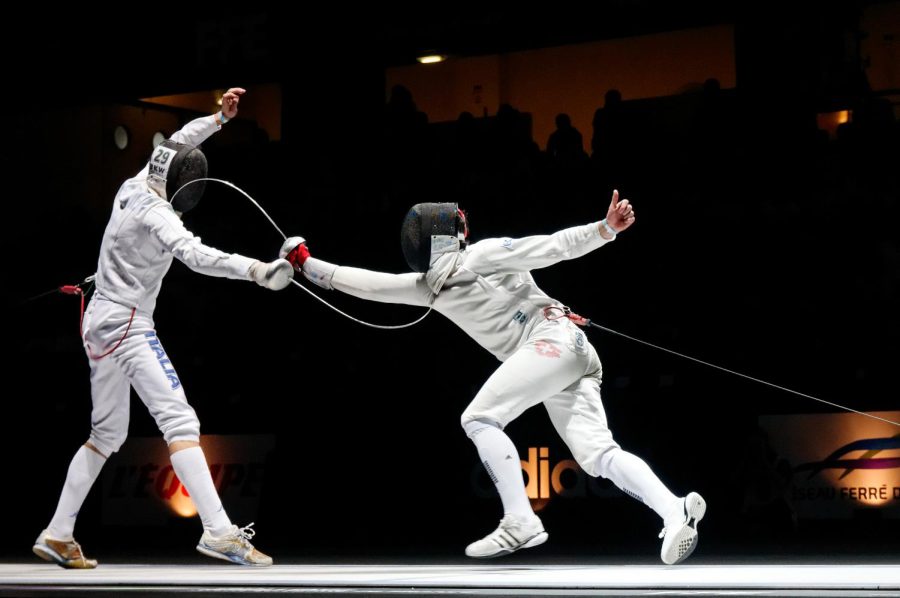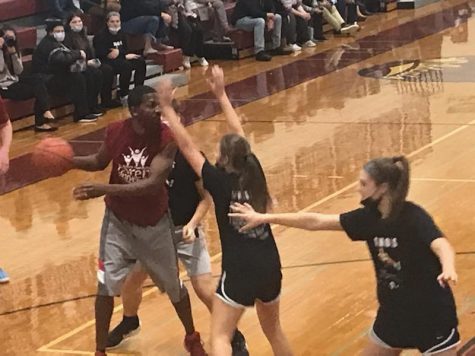Fencing: The Origins and Intricacies of this Exhilarating Sport
Did you know that Walt Whitman has a fencing team? I’ve written past articles about our team’s wins and achievements during the season. However, as many of you may know, fencing isn’t the most popular sport, especially compared to say, football or baseball. Yet, long ago (specifically, as late as the 15th century), fencing was an extremely prestigious and common sport. Its origins began with the rapier that was carried around in the 15th century, but was soon exchanged for the foil, which allowed individuals to showcase their swordsmanship in a relatively safer manner. Later on, other weapons like the epee and the saber developed, which are two fencing weapons commonly practiced today, in addition to the foil. So, I have taken it upon myself to reintroduce our populace to the sport of fencing, which is not only extremely competitive and fun to watch, but a great way to get a workout in.
Fencing involves flexibility, strength training, speed, proper control of one’s weapon or point control (which takes strength and precision), and endurance. One of the first things a fencer learns is to stand in an en garde position. Essentially, one puts their legs in an L-shaped position, with the person’s dominant leg in the front. Then, one “sits” or squats down.
In this position, one either advances to take a step forward or retreats to take a step back, all while maintaining their en garde. A lunge is a way to cover more ground, and is essentially when one person pushes off their back leg, steps their foot forward so it’s bent and so the back leg is straight with the back foot flat on the ground. Other techniques include a flesh (my personal favorite—it’s where you essentially charge your opponent), a jump-back (it’s what it sounds like), or a half-step (one only moves their front foot) to just name a few.
Of course, blade work involves a slew of other techniques, but I won’t name them all. And to do these techniques, extensive training of one’s dominant arm is required. Forearm strength is especially important in fencing, as most actions are small and require the movement of only the fingers (especially for epee and foil). The weapons have their own weight as well, so one must be able to hold them for an extended duration, as well as move their arm forward and back repetitively, and withstand beating to their blade (1) and be able to beat back.
Additionally, one must also have a great amount of leg strength. Fencing requires one to sit in a squat position for three minutes (for a five-touch bout or a standard round of fencing) while moving and potentially even deepening the squat. Not to mention, one must lunge from this position, which takes its own unique set of muscles if done correctly.
The three weapons also involve different skill sets. Epee fencing permits fencers to hit the entire body and has a heavier weapon with a larger bell (2). Epee is a poking weapon, meaning that one can only hit their opponent and gain points with their tip. (Think of the fight scene between Inigo Montoya and Westley in the film, A Princess Bride or any of the Pirates of the Caribbean fight sequences.) Foil fencing is also a poking weapon; however, the only place a foil can hit is the chest. Because of the smaller target, the bell of a foil is much smaller than an epee (and thus, the foil is lighter) because there is no need to protect one’s hand in the sport, as the hand is not a target area. Foil fencing also involves something called right of way, however, it is extremely complicated to explain and unnecessary for a basic explanation of the sport of fencing. Last but not least, saber fencing also involves right of way, but it is not a poking weapon, it’s a slashing weapon, where one uses the sides of the blade to hit their opponents. Saber also has a designated target area, which is anywhere above the legs, and their bell is also a different shape to protect the hand from getting hit.
Of course, these weapons all entail slightly different techniques. For example, saber bouts usually happen very quickly, and require more speed and agility, while epee fencing requires more endurance, careful planning, and strategizing. However, no matter the weapon, most fencers have to work very hard to get good at the sport. Between the amount of strength/endurance training and the amount of technique and agility needed, anyone and everyone who is a fencer is sure to get a difficult, yet intellectually stimulating workout from this sport, and of course, the gratification that comes with winning fencing bouts.
Now you are probably asking yourself this question: should I do fencing? Well, that’s up to you. If you’re looking for an exhilarating, but intense workout, then fencing is for you! And lucky for us at Whitman, we have a ton of access to this sport. Not only do we have a Varsity Fencing Team at Walt Whitman, but High Point Fencing Club is run at Whitman on Mondays, Wednesdays, and Fridays in the North and South Cafeterias.
So, if you’re tired of the same treadmill runs at the gym and want to mix up your workout, get your workout clothes and stand in en guarde. It’s time to fence!
- The act of hitting another person’s blade in the sport of fencing.
- The metal piece surrounding the grip, which is where the fencer holds their weapon.







